
When I want to quickly get into the Sierras and away from people, Alpine County is my go to. It is a hidden gem of mountains, trees rivers and wildlife including bald eagles.

Alpine County
Residents
Alpine County is the least populated county in California, slightly over 1,000 resident in 743 square miles, equating to 1.6 people per square mile. There are no incorporated towns and only a handful of settlements, the largest around 200 residents.

Alpine was not always a such a calm, peaceful county. In the 1850s several mining claims were active. In 1863 ore containing gold and silver was discovered and the race was on to Alpine County. By September, five mining districts were established: Mogul, Monitor, Silver Mountain, Raymond and Alpine. Towns sprung up as soon as strikes were discovered. Once the vein played out, the towns died just as quickly. Building materials and entire buildings were relocated to the next town, often leaving no trace of the place people once called home.

Mogul is one of those ghost towns. It was established in the 1860s to serve mines on the north side of Monitor Creek. The town had an elevation of 7000′ and was situated on isolated Forest City Flat.
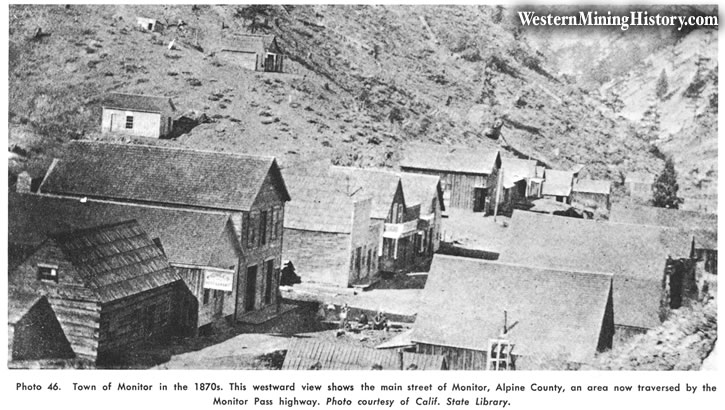
Monitor: 1870s
(Photo credit: Western Mining History)
Mogul was six miles southeast of Markleeville, soon to be the county seat. A mile south and at lower elevation was the larger town of Monitor, connected by toll road. This then connected to Antelope Valley roads to Genoa, Virginia City, Aurora and Bodie.
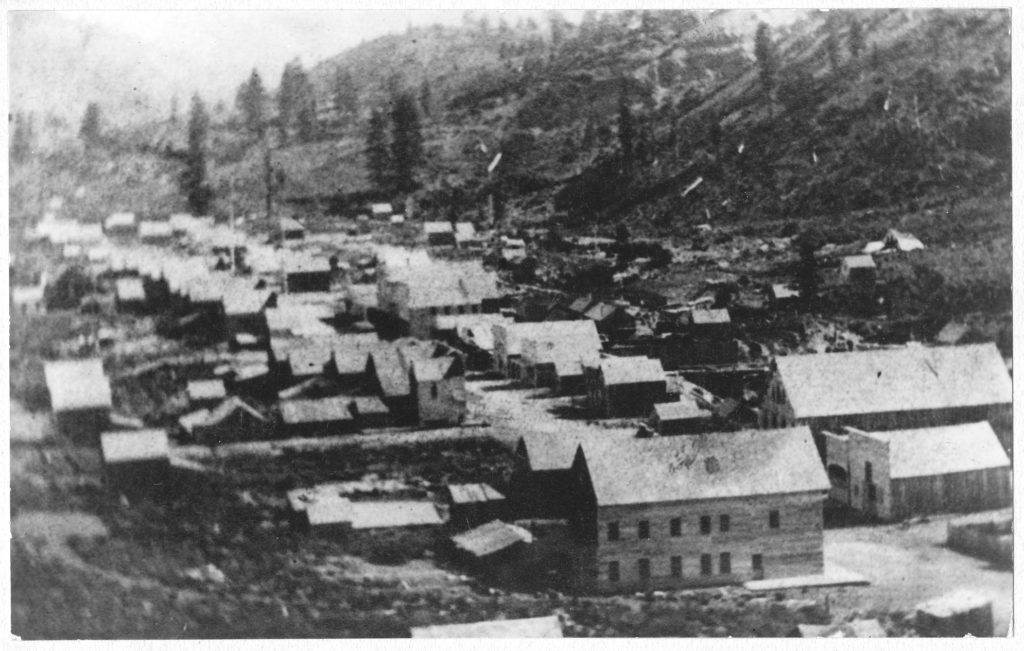
Silver Mountain City
(Photo credit: Scenic 4)
Miners relocated to Mogul from nearby Silver Mountain City after word of the new strikes spread. The mines were rich in gold, silver and copper. Larger mines in the Mogul region included Morningstar, Curtz, Georgian. Morningstar Mine had a 1200′ adit. The Curtz mine was sometimes known as part of Morningstar. It was 100′ in length, 20′ deep, 15′ wide. The shaft was caved at 300′. Veins appeared to go through the Curtz and Georgian mines, causing issues.
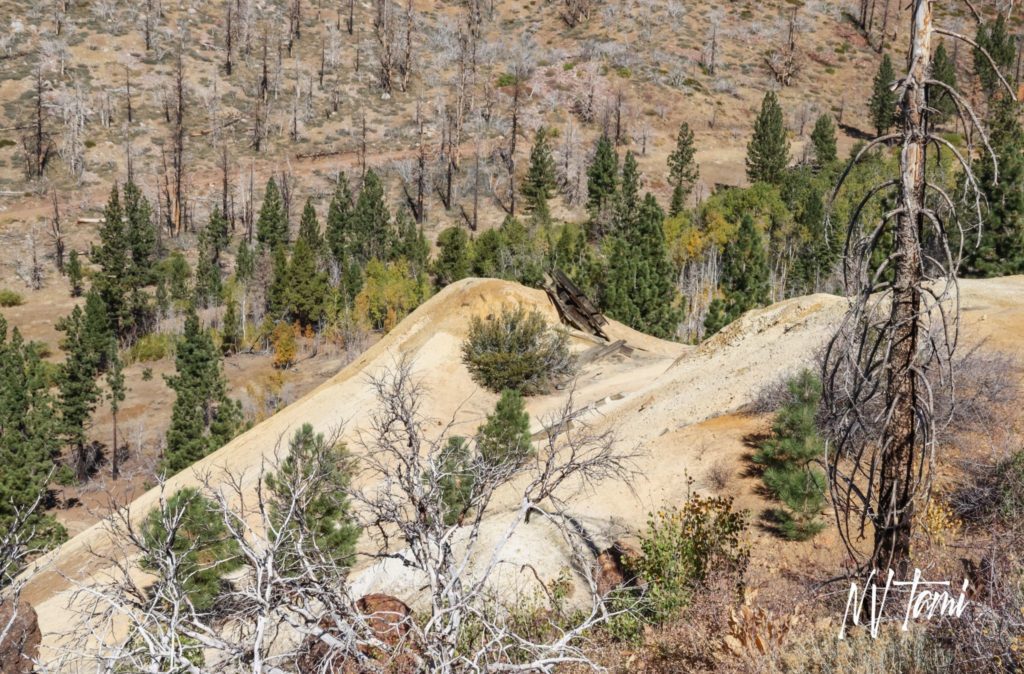
Ore from the area contained complex sulfides or “rebellious” ores, making it difficult to extract the gold, silver and copper. Some ore was shipped to Swansea, Wales for processing at a smelting facility.

Mining declined in the 1880s. Following the routine, residents and buildings moved on to the next big strike. Sporadic mining and exploration occurred into the 1950s but the district never regained its glory.
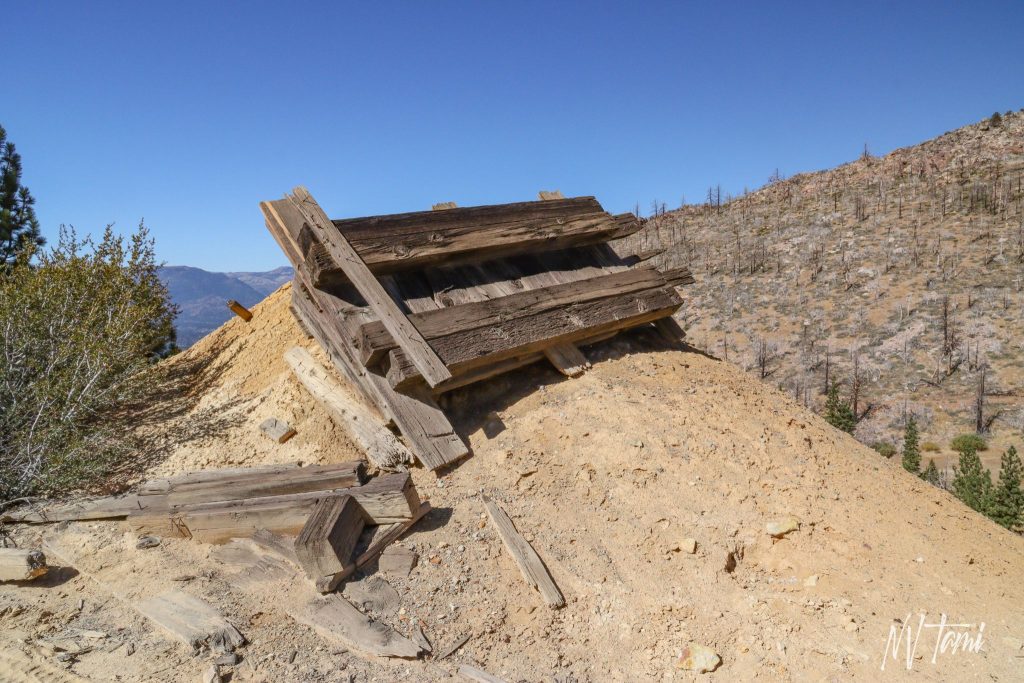
Morningstar Mine has the most evident remains. The tailings can be seen from Mogul and the surrounding area. Structures are from later mining activity based on building materials.
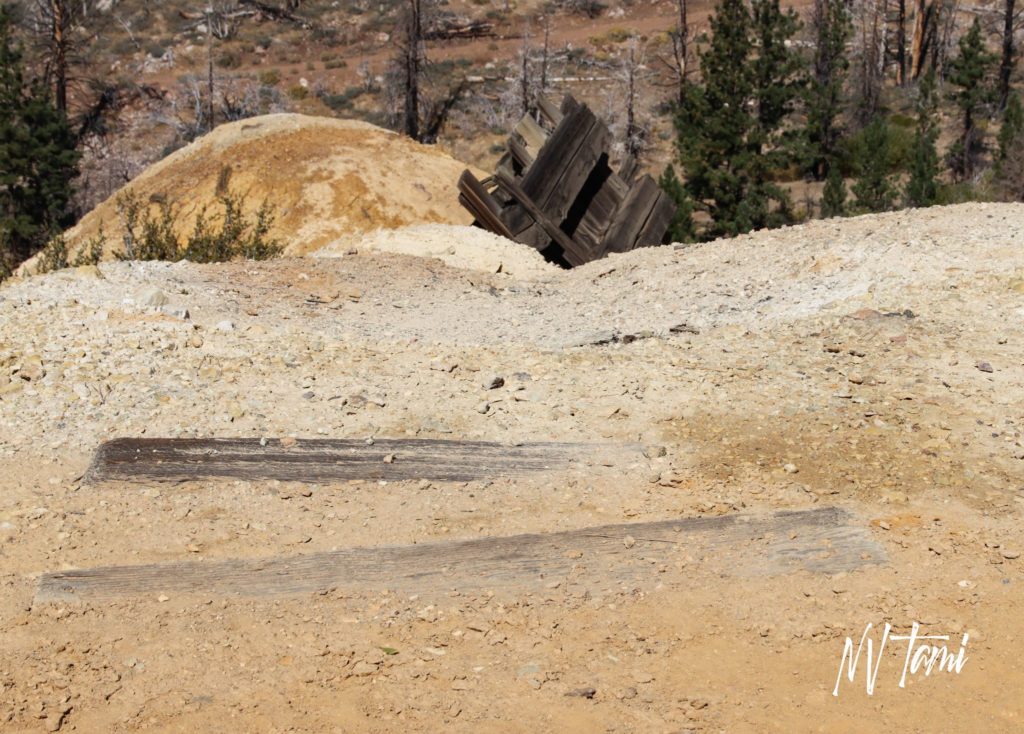
Rail road ties sit atop a tailings pile. Miners would push ore bins and dump tailings over the slope.
Adits at Morningstar mine have been closed off but several shafts remain open. Remember, mines are very dangerous. Stay Out – Stay Alive.

Mogul can be combined into a nice ghost town and scenic loop. Fall is always my favorite time of year in Alpine County. Markleeville, Mt. Bullion, Monitor, Mogul, Morningstar Mine and Monitor Pass. Settlers in the area must have had a thing for “M” words!

Visited 10-11-2020
References
- Mitchell, Roger. High Sierra SUV Trails, Volume 1, The East Side. Track and Trail Publications, 2002. Pages 81-85.
- Scenic 4: The Route-Points of Interest
- Western Mining History: Monitor-Mogul District
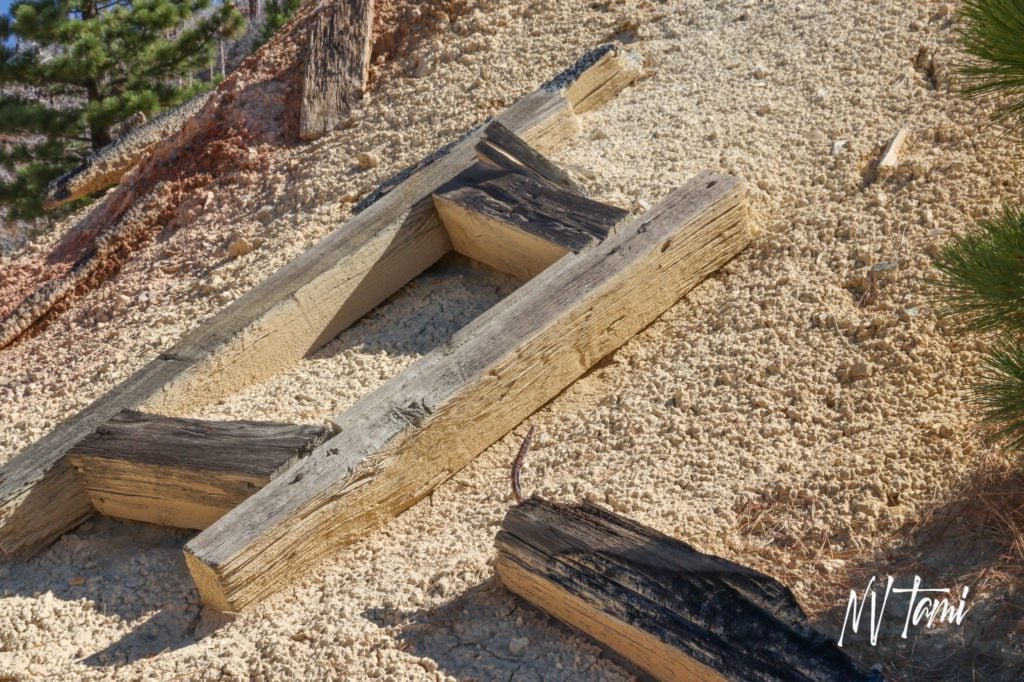
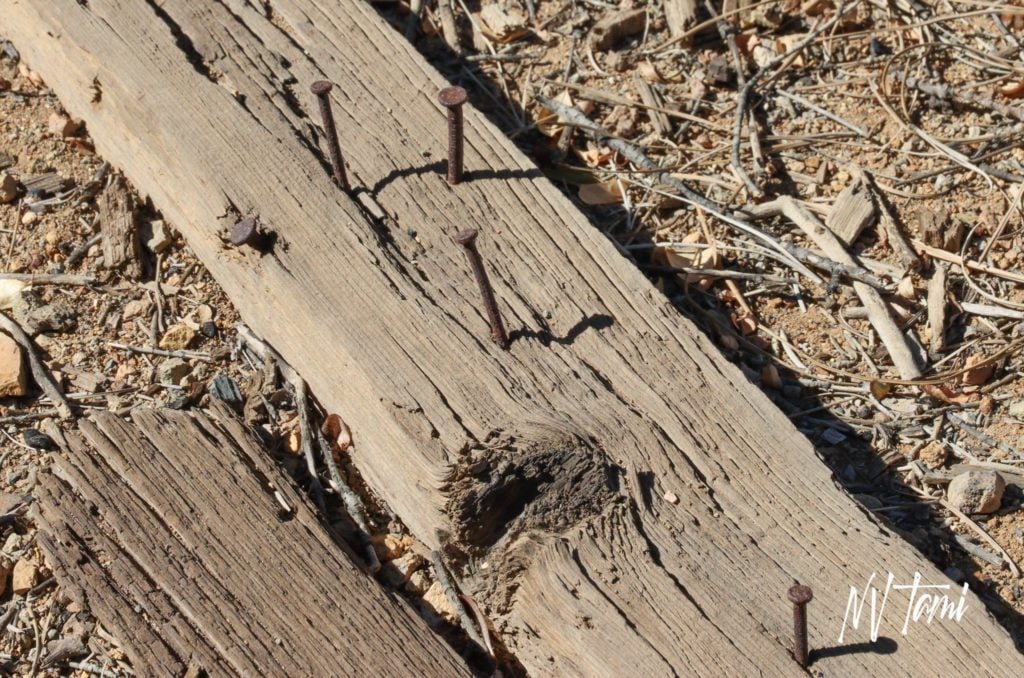
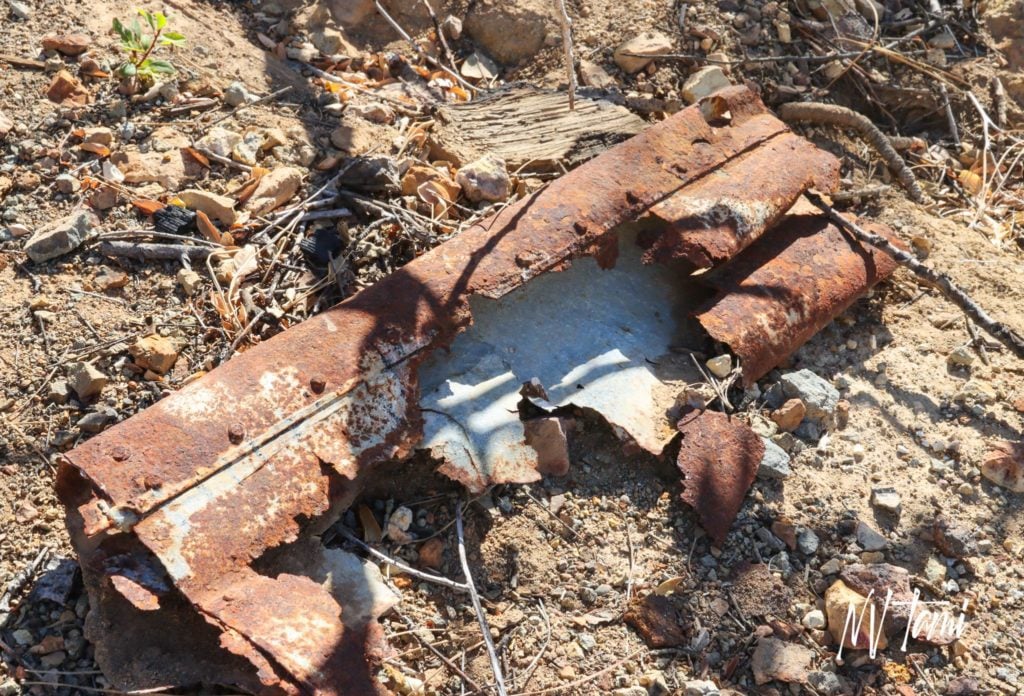
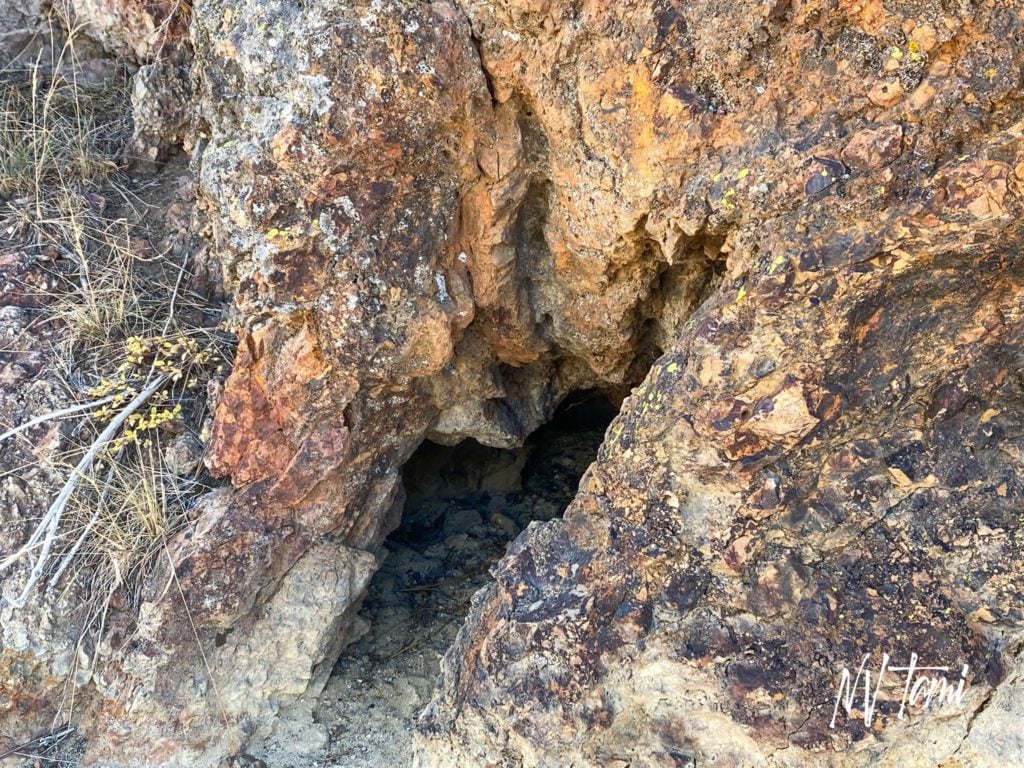
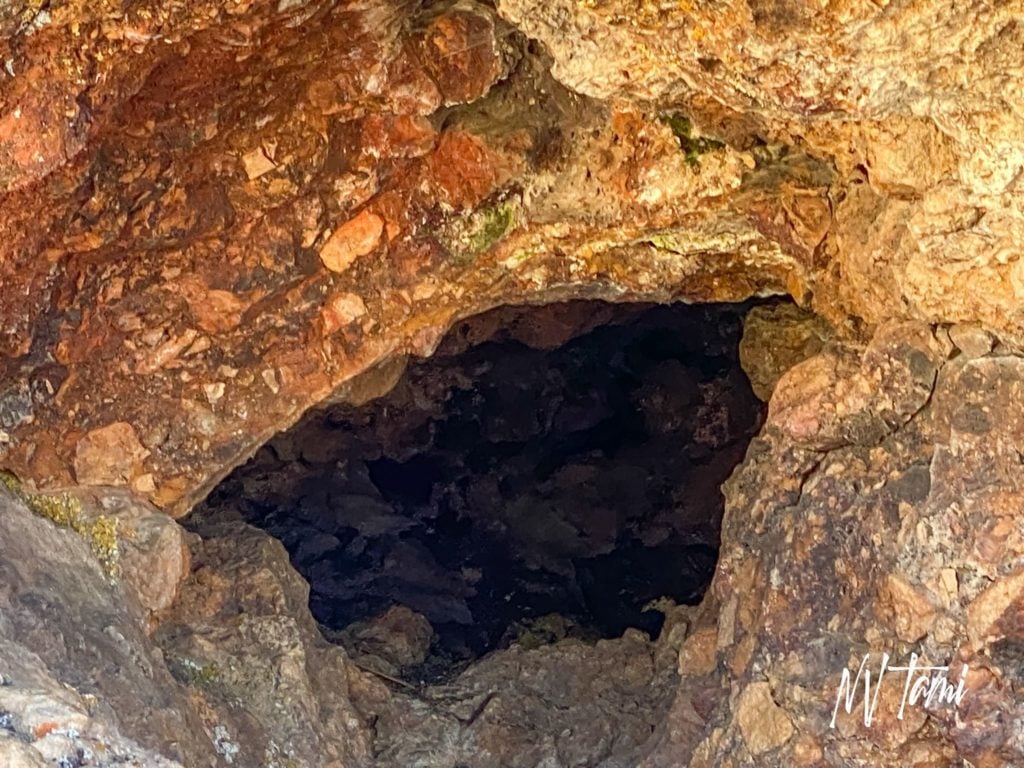
Jann Coles says
Thank you for caring about the old pioneer history of Reno. My ancestor worked on a ranch in Mogul owned or managed by Dr Henry Hogan. He wrote a letter to his wife when he died telling her of his passing. I was told Civil War veterans worked at this ranch in Mogul after the war. Do you have any information about a ranch in Mogul where Civil War veterans would have worked and lived?
Tami says
I assume Mogul outside of Reno? I’m not finding anything specific, but pieces that fit with the story. I searched for “Poor farms” which many communities had, but didn’t find on in Reno. Carson City had a poor farm, with many Civil War Veterans living and dying there.
I found Dr. Hogan. He was the oldest physician in Nevada, I’m assuming mean Reno area as Genoa had one prior. Settled in 1864. He was known as a great Dr. who helped even if not paid. He was also a Civil War veteran. He kept a scrapbook about newspaper articles about local veterans, and various social and legal issues. It might be a good place to start.
https://archive.library.unr.edu/public/repositories/2/resources/237
Do you have your ancestors name? Find a grave would be a good start, and Newspapers.com.